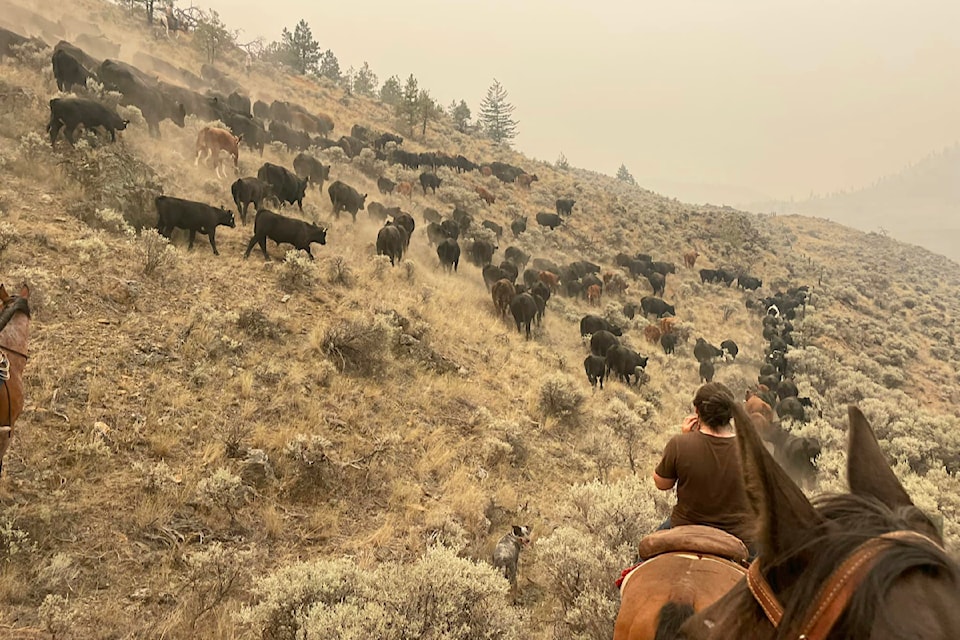The Shetland Creek wildfire has more than doubled in size, and as of the morning of Friday (July 19) was mapped at 12,402.5 hectares.
The BC Wildfire Service (BCWS) says that the increase in size is due to "significant overnight growth and more accurate mapping". On the evening of Thursday, July 18 the fire's size was pegged at 5,750 hectares.
The fire — which started northwest of Spences Bridge on July 12 — merged with the nearby Teit Creek wildfire on July 18. Both fires are believed to have been caused by lightning.
Evacuation orders and alerts have been issued by the Thompson-Nicola Regional District, the Village of Ashcroft, the Cook's Ferry Band, the Oregon Jack Band, and the Ashcroft Band, and it is expected that more alerts and orders will follow as the fire continues to move north along the west side of Highway 1.
Travel is still being allowed on Highway 1, but there is reduced visibility due to heavy smoke in the area. DriveBC is warning travellers that Highway 1 between Spences Bridge and Ashcroft might be closed at short notice due to the fire, and that motorists are advised to use caution and consider alternate routes. For highway information, including road closures, go to .
The evacuation order issued by the Thompson-Nicola Regional District on July 17 — which originally covered 76 addressed properties in the community of Venables Valley — has been expanded to include nine addressed properties on Hat Creek Road in the Oregon Jack valley. Evacuees are being assisted by Emergency Support Services located at the Cache Creek community hall at 1270 Stage Road, Cache Creek.
In order to ensure they are receiving the most timely information about evacuation alerts and orders, residents of the affected areas are encouraged to use the Voyent Alert! emergency alert system and subscribe to the alerts from the local government where they live. The TNRD, the Village of Ashcroft, and the Village of Cache Creek all use the Voyent Alert! system. To register, visit ; you can also download a free app for your smartphone. Alerts are sent via the app or by text, email, or phone call.
What you should do if you are on evacuation alert:
- Locate all family members and designate a meeting area outside the evacuation area, should an Evacuation Order be issued while separated.
- Pack essential items for quick departure, such as government-issued ID, medications, eyeglasses, valuable papers (e.g. insurance, credit, and mortgage information), and immediate care needs for dependents or pets. Pack keepsakes if time permits.
- Arrange to stay with family or friends (if possible).
- Prepare to move disabled persons, children and/ or neighbours, if assistance is needed.
- Prepare to take pets with you and move large animals and livestock to a safe area (if possible).
- If you are a livestock producer, ensure that you have your Premise ID in the event that you require support if an Evacuation Order is issued.
- Arrange transportation for all your household members. Fill the gas tanks of personal vehicles to be used in case of an Evacuation Order.
- If transportation assistance is required, please contact the TNRD at 250-377-7188.
For information on Evacuation Orders and the locations of Reception Centres, go to , , or the TNRD social media profiles on X (Twitter) and Facebook.
For more information and to access the interactive TNRD Emergency Map, visit .



